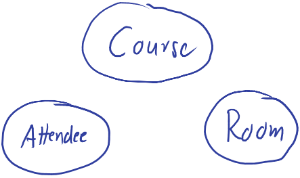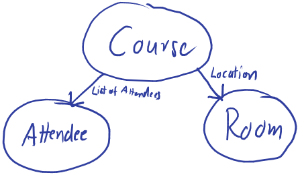Communication is hard. Writing and maintaining documentation in a wiki that is maintainable and adheres to each stakeholder's requirements is nothing to be done on ad-hoc basis. Some work needs to be invested to get started. And then expect to work in your information model on a daily basis. This is not that you failed in putting enough thought into your requirements and how you want to solve them, but because your information or communication model will change over time. Moreover you continuously learn more details about your domain that puts you into a position to improve your way of communication. There are plenty resources out there that will support you in creating your communication model. One of them is | Cite |
|---|
| document | ADOC:Morville2006 |
|---|
|
(which we highly recommend reading!). You may also start by reading our blog postsIf this is more than you are able to invest right now, maybe the following short process may get you started to design your set of doctypes / blueprints for the projectdoc Toolbox PDAC1. | 





